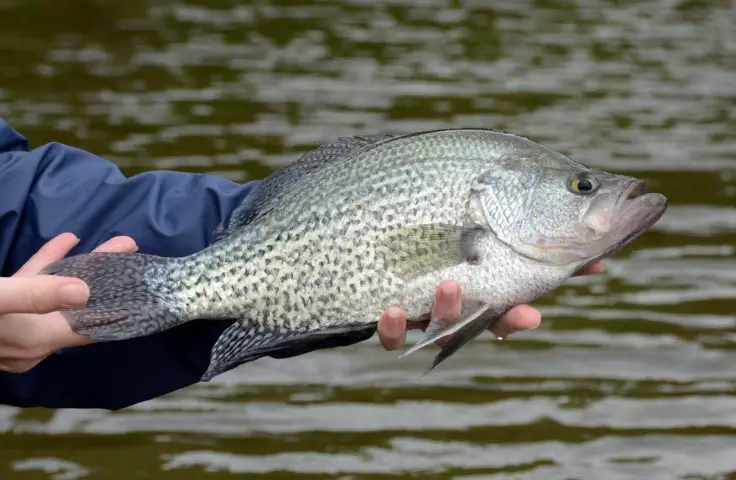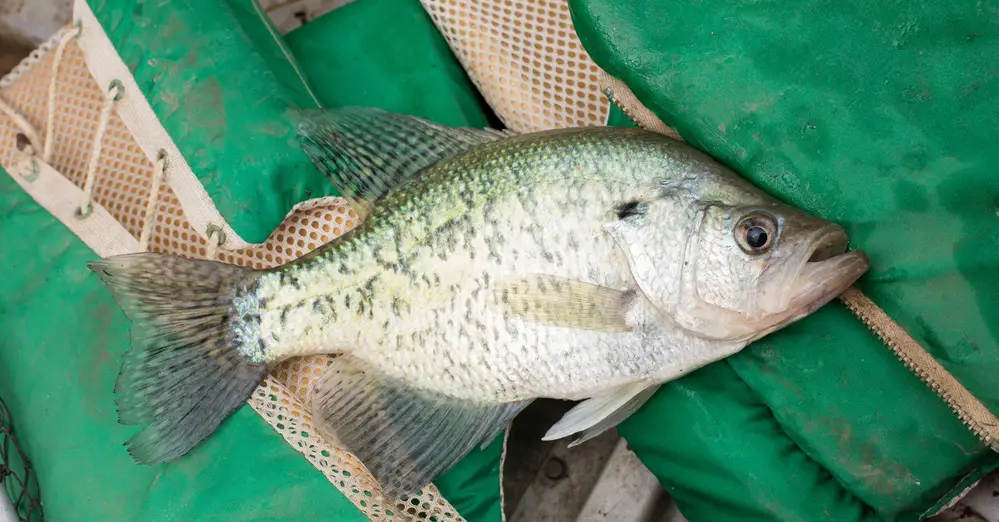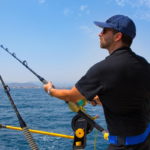It’s spring. The crappie are spawning. You’ve loaded your boat with jigs, minnows, and crankbait so that you can throw exactly what the crappie are biting. You get out your fish finder, and you gas your boat to the perfect cove and drop anchor for the day. Finally, you’re ready to land one crappie after another on your boat.
The only problem?
As soon as you dropped anchor, the crappie has schooled to another location.
The chase is on. You gas your boat to the next location on your fish finder. You sit still while the crappie keeps moving. It’s going to be a long day.
This is exactly why you need a trolling motor, and you can check out our recommendations for the three best trolling motors if you’re unsure of where to start.
A trolling motor will troll your boat at a minimal speed for you to keep up with crappie as they are schooling to different locations throughout the lake, but that’s not even the best part.
When crappie trolling, you can troll different tackle. You’re not limited to just throwing one jig head or one crankbait, unless you want to use just one, of course. Instead of throwing one bait at crappie, you can troll using three or four, and we’re going to tell you exactly how to do that with this step-by-step guide for trolling for crappie.
Step by Step: How to Troll for Crappie

Step One: Determine Your Depth
The first thing you’ll need to do is get out your fish finder to see how deep the crappie are schooling. This will tell you how deep you need to set your bait while trolling.
Step Two: Rig Your Lines
Are you going to use one line while trolling, or do you want to set up three or four lines with different bait to triple your chances of throwing what crappie are feeding on that day?
No matter how many lines you choose to throw, you’ll need to rig them.
Crappie love feeding on larvae and minnows, but their preference for size and color can change from day to day, especially if their food source is either plentiful or scarce. Throwing various bait, including small crappie jig heads, trolling crankbaits, or minnows will help you see what the crappie are feeding on.
Remember that crappie are called paper mouths for how thin their mouths are. Using large bait with large hooks can deter crappie from taking the bait, but what’s worse than using too large of bait is using hooks that are too big. Large hooks can tear straight through a crappie’s mouth, causing you to lose the crappie when it becomes hooked. When trolling for crappie, you’ll need to make sure you use the right size tackle with the right size hook.
How to Rig Jig Heads
A jig head is a fish hook that contains a weight disguised as an eye on the base of the hook. You can use jig heads with various artificial tackle that make up the body of the jig. These bodies are typically spinnerbaits, crankbaits, or small plastic worms or grubs.
If you’re rigging jig heads while crappie fishing, you should use a small jig that weighs between 1/32 and 1/8th of an ounce. However, if you are using a heavy jig body, you should use a 1/32 ounce jig to not make the jig too heavy.
How to Rig Live Minnows
You can also use live minnows on your lines. Some crappie anglers offer different techniques for rigging live bait like minnows, but we have found that rigging the minnow just below the eyes and through the mouth is the most effective method for rigging minnows for crappie.
Step Three: Start Trolling
Now it’s time to put the boat in motion – but not too much motion! You’ll only need to troll about 0.7 mph to 1 mph. Then, when you’ve begun trolling, you can put out your lines.
Step Four: Putting Out Your Lines
This may be the most important step of all to learn as crappie anglers.
Remember in step one, where you calculated how deep you would be fishing? Well, you’ll need to deploy your lines in relation to that depth, and the weight of your jigs will determine just how much line you need to let out.
Lightweight jigs that use 1/32 ounce jig heads will only sink just a few feet, while heavier jigs that use ⅛ ounce jigs can sink up to 12 feet or more. This is important to know so that you know how much line you need to put out according to your jigs.
Make sure you let out enough line to troll through the approximate depth that the crappie are swimming, when in dought try to be slightly above them.
Check out this article so you know where Crappie live.
Step Five: Secure Your Rods
Unless you want to hold your rod while trolling (we don’t recommend that), you’ll want to secure them on your boat. The best way to do this is with a rod holder. Rod holders can be easily mounted to the side of your boat and will secure your rod in place so that it effectively hooks the fish without pulling the rod off the boat. Keep the drag light when the pole is in the rod holder so the fish can hook themselves without tearing through their thin mouths.
Step Six: Watch Your Rods
When you troll for crappie, you can easily and actively bass fish while trolling. Just make sure that you keep an eye on your rods to see if you have gotten a bite.
When you get a bite, you’ll notice that the tip of the rod is bending or has twitched from a strike. You should pick up the rod and feel if you are getting a bite or if a crappie has hooked itself on the jig.
Step Seven: Reel Your Line
As we mentioned earlier, crappie are paper mouths, so it’s very easy for hooks to rip through their thin mouths. If you have hooked a crappie, reel slowly until you can get the crappie to the boat. We recommend using a long handle net to safely land the fish onto the boat without ripping its mouth.
Final Thoughts
If you aren’t having any luck trolling for crappie, you should adjust your depth. You may be fishing too deep for crappie, especially in early spring where the water temperature is still cold. Crappie will follow bait up toward the surface of the water rather than deep into the water, so if in doubt, troll shallow.



